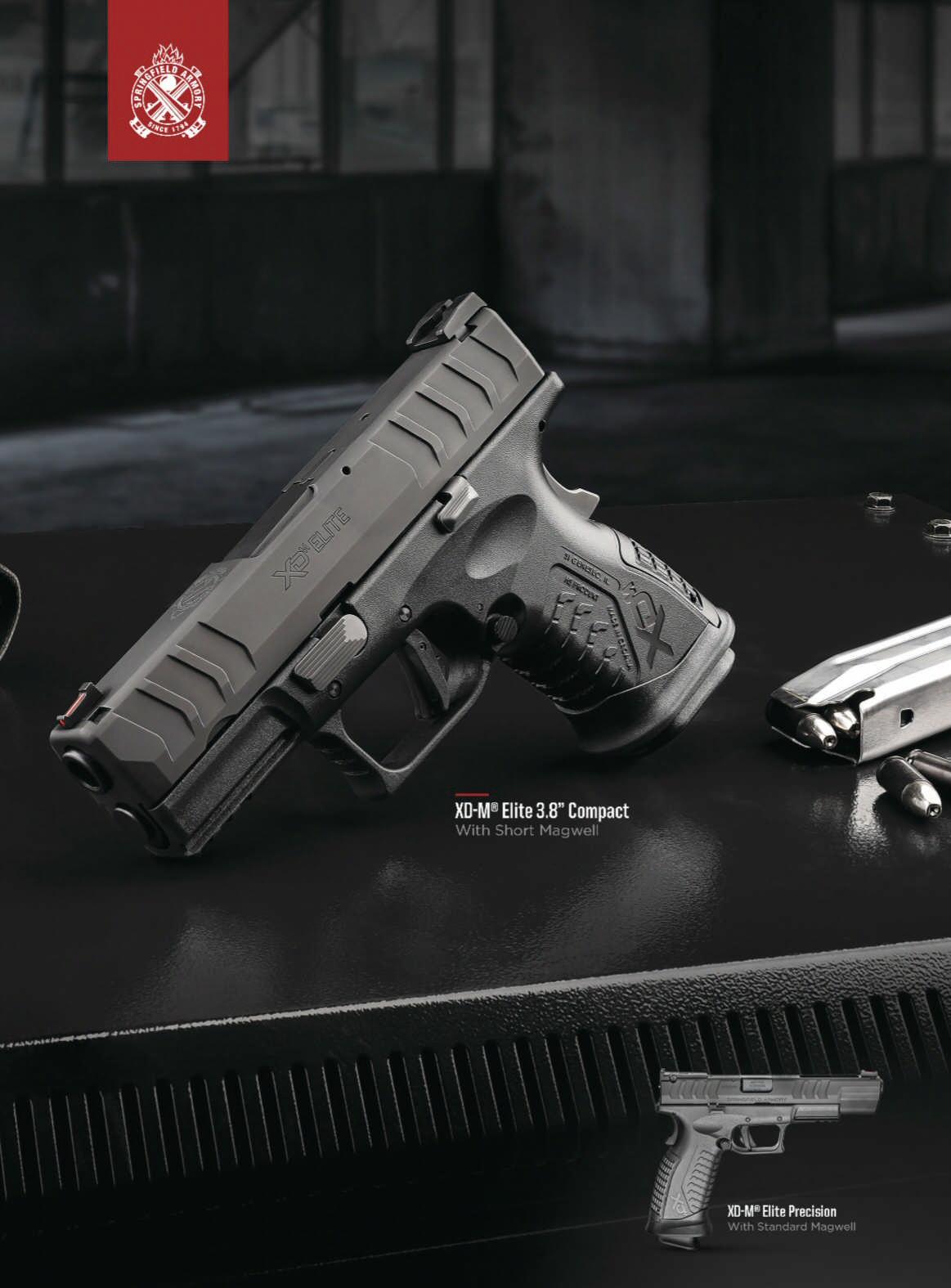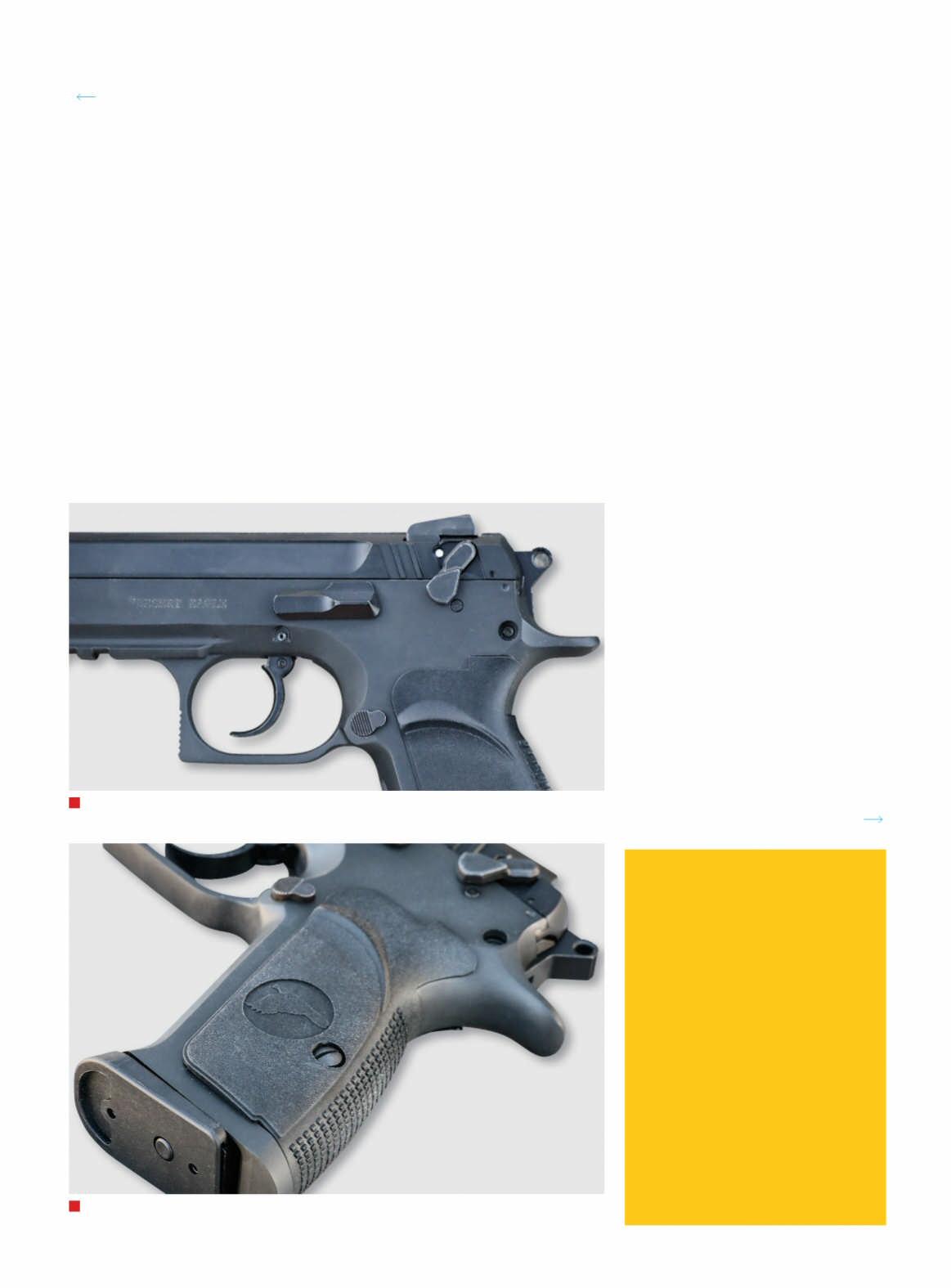| ESSENTIALS | By JAMES TARR
NO GLANCING BLOW
INTRODUCING FIOCCHI’S NEW BLUE GUARDIAN REDUCED RICOCHET.
20 HANDGUNS APRIL/MAY 2021
Blue Guardian Reduced Ricochet uses a lead-free bullet and a lead-free primer, but it’s not just for range practice. It’s also a great defensive option thanks to its hollowpoint design.
<
FIOCCHI’S BLUE GUARDIAN REDUCED Ricochet hollowpoint ammo is heading to your gun store shelves. This new offering is designed to be safe for indoor shooting in more ways than one. The projectiles are lead-free, as are the primers, and depending on where you shoot, this can meet range requirements in place at some indoor facilities. These Reduced Ricochet bullets are a powdered mix of copper and tin that is then heat-treated in a proprietary process, similar to what is seen with frangible/training ammunition. However these bullets have a hollowpoint design and are meant to perform well in defensive use, whereas dedicated frangible ammunition is solely intended for target shooting. Currently, Blue Guardian Reduced Ricochet ammunition is offered in the four most common pistol calibers. You have your choice of a 75-grain .380, 100-grain 9mm, 125-grain .40 S&W and 155-grain .45 ACP. Like solid copper bullets, these lead-free bullets are lighter than comparatively sized traditional jacketed lead-core bullets. The 100-grain 9mm Reduced Ricochet bullet is about the same size as a traditional 124-grain lead core bullet. Fiocchi sent me a sample of their 9mm Blue Guardian Reduced Ricochet ammuntion. My plan was not just to chronograph it but also gel test it and devise some way to measure its advertised reduction in ricochets upon impacting hard surfaces. This 100-grain load is advertised at 1,280 fps. For testing I used a SIG P320 Compact, which sports a 3.9-inch barrel. Out of the SIG this
ammo did 1,239 fps, and felt recoil was a little soft compared to standard 9mm ammo. For gel testing I used Clear Ballistics blocks, which are more convenient than FBI spec gelatin but are actually made of polymer. Extensive testing has shown the Clear Ballistics blocks are not quite as dense as true FBI blocks, so you’ll generally see a bit deeper bullet penetration and slightly less expansion than you would with FBI blocks. Ballistic block test results were fascinating, and I did them twice— once with bare blocks, once with blocks covered by the FBI’s “heavy clothing” barrier. “Fascinating” means I got interesting and unexpected results, but don’t think that’s a bad thing, because it wasn’t. I fired half a dozen rounds into the blocks, just to see if the results of my first round were typical, and they were. In fact, the gel test results were boringly consistent. During bare block testing, almost immediately upon impact with the
block the front hollowpoint section of the bullet fragmented, with the base continuing straight on. The fragments veered off from the base and penetrated between four and eight inches, with about a sixinch wide spread, while the bases penetrated between 16.5 and 17.5 inches. Recovered weight of the bases averaged 60 grains. The fragments big enough for me to recover from the block weighed between one and six grains. The hollowpoint didn’t expand but rather fractured, and the fragments all had sharp edges. Some of the fragments were decidedly pointed. The bullet bases were stubby little cylinders. Basically, the bullets provided immediate, almost explosive fragmentation with deep penetration, which is exactly what you want in a defensive handgun round. When shooting a block covered with the FBI “heavy clothing” barrier—denim over sweatshirt over T-shirt over undershirt—the results were nearly identical to the bare WWW.HANDGUNS.COM






